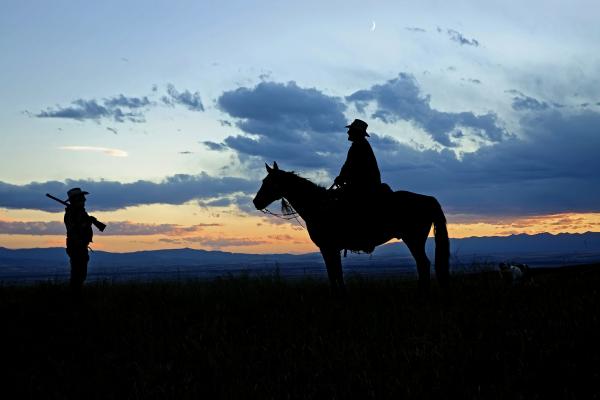WHEN A HASTILY organized cowboy “militia” seized a national wildlife refuge near Burns, Ore., it brought the spotlight of 24-hour-a-day media coverage to a streak of angry alienation that had been building in the West for a long time.
In fact, as Washington Post reporter Amber Phillips noted, the conflict has existed “since the government stopped giving away land and started actively preserving some of it.” That would have been about the time that, in 1890, the superintendent of the U.S. census declared the American frontier to be closed. Shortly thereafter, President Theodore Roosevelt began serious efforts to conserve Western land and resources. In fact, it was Roosevelt himself who, in 1908, created the Malheur National Wildlife Refuge that the militia seized.
This armed occupation of federal property was ostensibly in defense of a father and son in Harney County, Ore., who were convicted of setting fires on federal land, but the confrontation was provoked and led by visiting members of Nevada’s Bundy family who, in 2014, staged a similar armed confrontation in defense of their patriarch, Cliven Bundy, grazing cattle on federal land without a permit.
The federal government owns a great deal of the land in much of the noncoastal West. That land belongs to all of us—all 320 million of us. We stole it fair and square, either from its Indigenous inhabitants, or from Mexico, or both. But most of us never see any of that land except in the movies while, for much of the past two centuries, local loggers, ranchers, and miners had easy access to it. As a result, many people in the West came to feel that the public land was not really the common heritage of a continental republic but in some real sense “their” land. Many of them depended upon it for their livelihoods. That’s what they were supposed to do when the frontier was opened. They were supposed to establish settlements, exploit the natural resources, fend off the Indigenous people, and make the West safe for the railroads.
Now we don’t need those settlers anymore, so they are being consigned to the dustbin of history, alongside all the American textile workers, shoemakers, and others who have met the fate of John Henry.
The people who took up arms against their own government in Oregon are morally inexcusable on many levels.
For one thing, the vigilante idea that armed individuals have a right to execute justice is a recipe either for chaos or fascism. And the militiamen are often frankly racist and xenophobic. Back in 2014, Cliven Bundy’s media star began to fade when he started spouting bilious comments about African Americans. And a Trumpian fear of invasion from Mexico is central to the militia worldview.
However, nobody in power worried about that racism when the nation wanted people out West to slaughter the Indians. And Cliven Bundy is also, for all his faults, a guy whose family has worked on the same land since 1877 and now thinks that his government values the survival of a desert tortoise over the way of life his ancestors created.
The problem is that, unlike the textile workers or the shoemakers, these guys have guns. And they were formed by a culture that glorifies the use of firearms to defend one’s hearth and honor. But, again, that culture was essential to the making of the U.S. as we know it. That’s why it constitutes one of the most vital and enduring streams of our popular entertainment—the Western movie.
Of course, the old patterns of land use in the West have to change. They are environmentally unsustainable, and they always were. But, as filmmaker Jean Renoir famously put it, “The terrible truth is that everyone has their reasons.” Even the cowboy militiamen.

Got something to say about what you're reading? We value your feedback!

